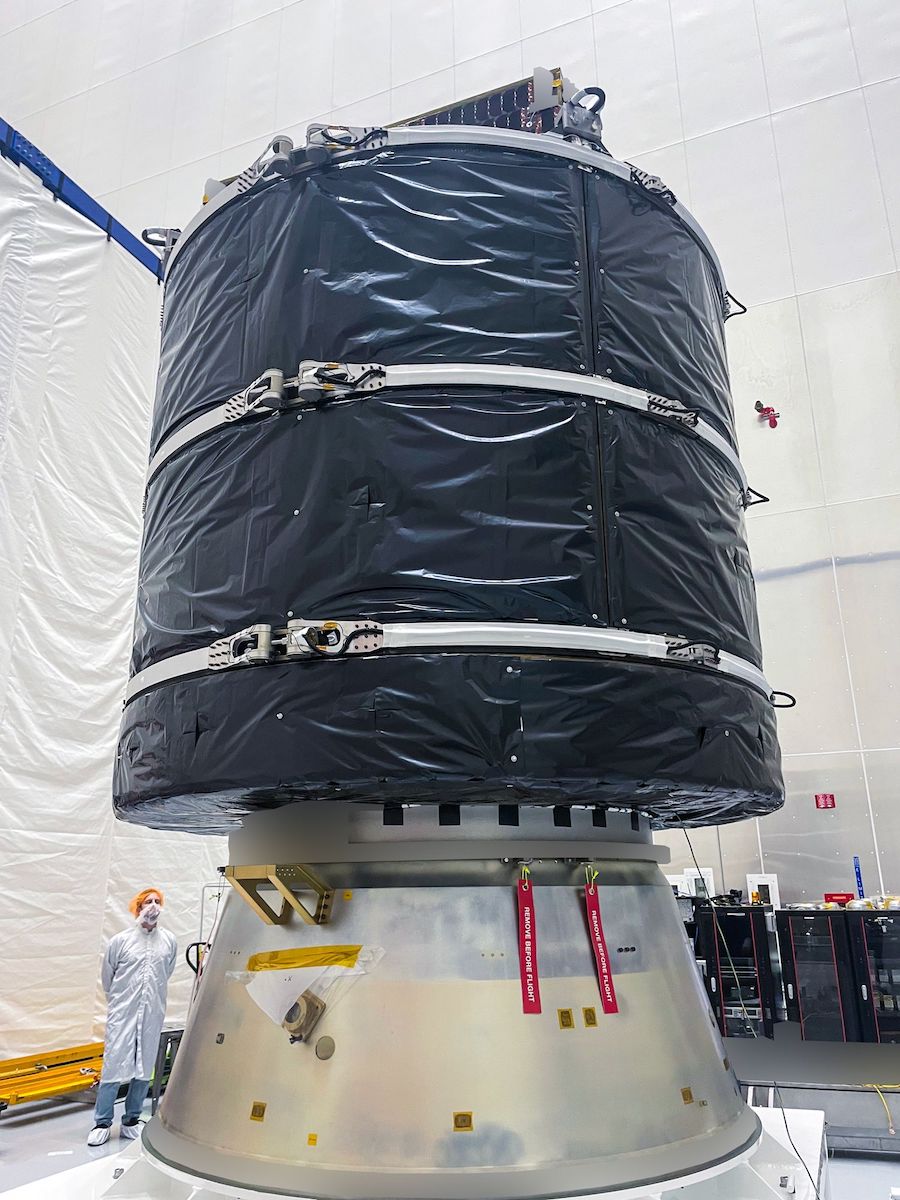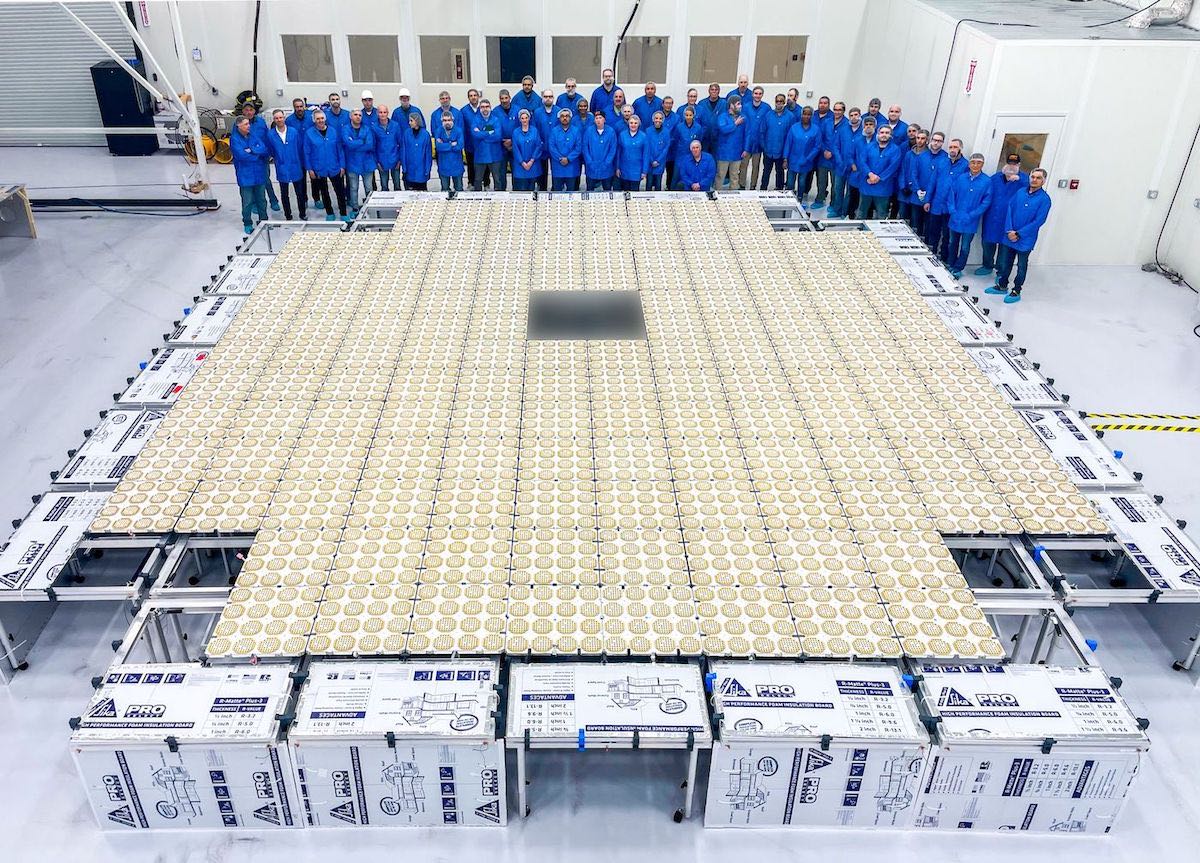Live coverage of the countdown and launch of a SpaceX Falcon 9 rocket from Launch Complex 39A at NASA’s Kennedy Space Center in Florida. The Starlink 4-2 mission will launch SpaceX’s next batch of 34 Starlink internet satellites and a rideshare payload for AST SpaceMobile’s space-based cellular broadband network. Follow us on Twitter.
SFN Live
A reusable SpaceX Falcon 9 booster going for its record-breaking 14th flight to space is counting down to blastoff from NASA’s Kennedy Space Center at 9:20 p.m. EDT Saturday (0120 GMT Sunday). The mission is billed as one of SpaceX’s complex launches to date, with the objective to deploy 34 Starlink internet spacecraft and a testbed satellite for AST SpaceMobile’s space-based cellular broadband network.
The rocket’s upper stage will fire its engines five times Saturday night — four burns to deploy AST SpaceMobile’s BlueWalker 3 satellite and the 34 Starlink payloads into two distinct orbits, then a final maneuver to drive the upper stage back into Earth’s atmosphere for a destructive re-entry.
The five engine firings by the Falcon 9’s upper stage will be the most ever performed on a SpaceX mission, besting the previous record by one. And the first stage of the Falcon 9 rocket flying Saturday night will become SpaceX’s fleet leader.
The first stage, designated B1058, is a historic part of SpaceX’s rocket family. It debuted May 30, 2020, with the launch of SpaceX’s first astronaut mission on a Crew Dragon spacecraft.
The booster landed on a drone ship in the Atlantic Ocean after the crew launch in 2020. It’s flown 12 times since then, hauling a South Korean military satellite into space and launching a resupply mission to the International Space Station, two Transporter small satellite rideshare missions, and eight Starlink missions.
The launch from pad 39A Saturday night is the first of two Falcon 9s SpaceX is preparing for liftoff in quick succession. Another Falcon 9 rocket is standing on Space Launch Complex 40 at Cape Canaveral Space Force Station, a few miles to the south of Kennedy, to haul 54 Starlink satellites into orbit as soon as Sunday night.
SpaceX has dispatched two of its rocket landing platforms from Port Canaveral into the Atlantic Ocean. The boosters flying Saturday and Sunday will target landings on each of the drone ships positioned a few hundred miles northeast of Cape Canaveral.
SpaceX rolled the Falcon 9 to pad 39A on Friday amid ongoing construction work to ready the seaside launch complex as a future base for SpaceX’s huge reusable Super Heavy booster and Starship rocket. Ground crews raised the 229-foot-tall (70-meter) Falcon 9 vertical early Saturday on pad 39A, less than 12 hours before lifting another Falcon 9 upright on pad 40.

The 34 Starlink satellites for Saturday night’s mission are joined by BlueWalker 3, a prototype for a planned fleet of spacecraft built and owned by Texas-based AST SpaceMobile. AST SpaceMobile’s test satellite will unfurl an antenna array in low Earth orbit covering an area of 693 square feet (about 64 square meters), larger than a typical studio apartment. AST SpaceMobile aims to deploy additional spacecraft in 2023 to start building an operational network designed to link consumer cell phones via satellites.
“The launch of BlueWalker 3 is the culmination of years of effort by our engineers to let us test connecting the phone in your pocket, with no modifications to the phone, directly with one of our satellites in space,” said Abel Avellan, chairman and CEO of AST SpaceMobile, in a statement. “This revolutionary technology supports our mission to eliminate the connectivity gaps faced by more than 5 billion mobile subscribers today moving in and out of coverage, and bring cellular broadband to approximately half of the world’s population who remain unconnected. We want to close the gap between the digital ‘haves’ and ‘have nots’.”
BlueWalker 3 is riding in the upper position inside the Falcon 9’s payload shroud. The Falcon 9’s upper stage will perform two engine burns before deploying the roughly 3,300-pound (1.5-metric ton) BlueWalker 3 satellite at an altitude of around 318 miles (513 kilometers). Separation of BlueWalker 3 is scheduled about 50 minutes after liftoff.
Two more engine burns by the Falcon 9 upper stage will maneuver the rocket into a slightly lower orbit for deployment of 34 Starlink satellites at around T+plus 2 hours and 4 minutes. Elon Musk, SpaceX’s founder and CEO, said the launch Saturday night would be “one of our most complex missions.”
“BlueWalker 3 is going to be the largest commercially deployed communications array in low Earth orbit ever,” said Scott Wisniewski, AST SpaceMobile’s chief strategy officer. “It’s 693 square feet, and it’s designed to test our direct to cell phone cellular broadband architecture.
“We are a company founded on the desire to build cellular broadband direct from space,” Wisniewski said. “We’ve been at it since 2017. And this satellite is designed to connect directly with cell phones, regular cell phones, unmodified cell phones on the ground and we’ll be doing testing on that in the coming months.”

Some time in the first two months after launch, assuming BlueWalker 3 is working well, ground controllers will send the command for the spacecraft to unfurl its antenna array. The antenna consists of 148 individual sections, each with its own antenna elements, connected together with mechanical hinges, according to Wisniewski.
“The unfolding process itself is pretty straightforward,” Wisniewski said in an interview with Spaceflight Now. “Basically, we’ve compressed the satellite into a cube and it opens up into two dimensions using stored energy in hinges that have packed it together. And what opens up is an array of antenna elements pointing down toward the Earth, and solar elements pointing up at the sun.
“The key with all deployments is to keep it as simple as possible and keep it as dumb as possible,” Wisniewski said. “What the James Webb Telescope did was amazing. But that level of complexity, we believe, breeds potential errors. And if you can avoid it, you do. We’ve had, over the years, many more complex designs and in the future, there’s a lot of cool ways to do this. But ultimately, just simple mechanical hinges was the best way to de-risk it.
“For us, the unfolding … is going to be a critical milestone,” Wisniewski said. “And then after that, we’ll be doing calibration, and then start to make phone calls.”
AST SpaceMobile is backed by venture capital funds and investments from Vodafone, the cell tower operator American Tower, and the Japanese mobile telecom company Rakuten. The company has agreements with Samsung, Nokia and mobile network operators like Vodafone, AT&T, and Orange to test the space-based cell network’s compatibility with existing cell phones.
BlueWalker 3 will demonstrate AST SpaceMobile’s technology with more than 10 mobile network operators across six continents. “Our objective is to calibrate their networks so we can connect with them,” Wisniewski said.
If all goes well, the company plans to launch the first five operational satellites in late 2023, likely on another SpaceX Falcon 9 rocket. AST SpaceMobile plans to eventually deploy 168 satellites.
“This is all part of our plan to build 168 satellites globally,” Wisniewski said.
ROCKET: Falcon 9 (B1058.14)
PAYLOAD: 34 Starlink satellites (Starlink 4-2) and BlueWalker 3
LAUNCH SITE: LC-39A, Kennedy Space Center, Florida
LAUNCH DATE: Sept. 10, 2022
LAUNCH TIME: 9:10:10 p.m. EDT (0110:10 GMT)
WEATHER FORECAST: 60% chance of acceptable weather; Low risk of upper level winds; Low risk of unfavorable conditions for booster recovery
BOOSTER RECOVERY: “A Shortfall of Gravitas” drone ship east of Charleston, South Carolina
LAUNCH AZIMUTH: Northeast
TARGET ORBIT: Roughly 318 miles (513 kilometers) for BlueWalker 3; 201 miles by 207 miles (324 kilometers by 334 kilometers); 53.2 degrees inclination
LAUNCH TIMELINE:
- T+00:00: Liftoff
- T+01:12: Maximum aerodynamic pressure (Max-Q)
- T+02:32: First stage main engine cutoff (MECO)
- T+02:35: Stage separation
- T+02:42: Second stage engine ignition (SES 1)
- T+03:16: Fairing jettison
- T+06:17: First stage entry burn ignition (three engines)
- T+06:37: First stage entry burn cutoff
- T+08:09: First stage landing burn ignition (one engine)
- T+08:28: Second stage engine cutoff (SECO 1)
- T+08:31: First stage landing
- T+47:16: Second stage engine ignition (SES 2)
- T+47:20: Second stage engine cutoff (SECO 2)
- T+49:51: BlueWalker 3 separation
- T+1:07:36: Second stage engine ignition (SES 3)
- T+1:07:38: Second stage engine cutoff (SECO 3)
- T+1:53:56: Second stage engine ignition (SES 4)
- T+1:54:05: Second stage engine cutoff (SECO 4)
- T+2:03:49: Starlink satellite separation
MISSION STATS:
- 175th launch of a Falcon 9 rocket since 2010
- 183rd launch of Falcon rocket family since 2006
- 14th launch of Falcon 9 booster B1058
- 150th Falcon 9 launch from Florida’s Space Coast
- 54th SpaceX launch from pad 39A
- 148th launch overall from pad 39A
- 117th flight of a reused Falcon 9 booster
- 60th Falcon 9 launch primarily dedicated to the Starlink network
- 41st Falcon 9 launch of 2022
- 41st launch by SpaceX in 2022
- 39th orbital launch attempt based out of Cape Canaveral in 2022
Email the author.
Follow Stephen Clark on Twitter: @StephenClark1.
from Spaceflight Now https://ift.tt/rOMGYqI
via World Space Info







0 comments:
Post a Comment